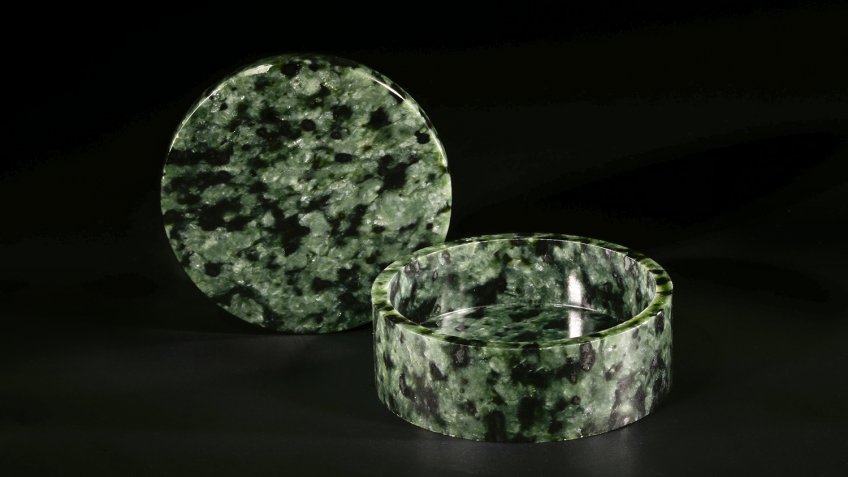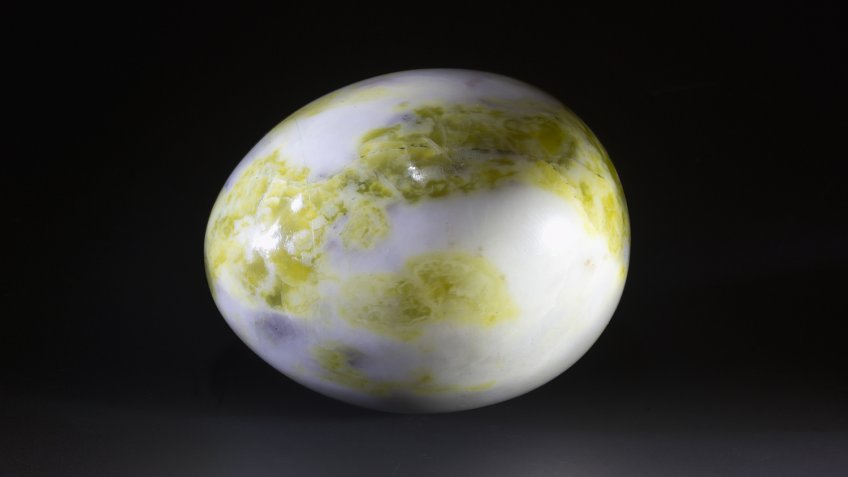
This is an unusual stone of a surprisingly beautiful colour that did not, however, become an object of interest for jewellers.
Serpentinite is a rock whose name is linked to numerous legends. As such, in the Ural region, wherein the world's largest reserves of the mineral are located, serpentinite rock was believed to be a petrified snakeskin. Locals thought the treasures of the Urals Mountains were under the protection of the powerful spirit appearing as a snake and known as 'The Great Snake' or 'The Great Serpent' (in Russian: «Великий Полоз»). The giant snake was guarding the cave with limitless reserves of gold. From time to time, he sloughed off his old skin, which upon lapidifying turned into fancy rocks resembling by its texture the reptile's skin. According to folk superstition, a person who would get hold of the mineral was destined to become an owner of countless treasures.
Others, in turn, believed the mineral was a symbol of sin and temptation. As per another legend, serpentinite is a petrified slice of a forbidden apple, on which Adam choked.
Russians also thought serpentinite could protect from a snake bite and prevent the venom from spreading in the body. Therefore it was common to have dishware made of the mineral at home. And not only in Russia - noblemen of medieval Europe were eating from the plates made of serpentinite too, yet they had another reason in mind. They were trying to escape cholera that way.
Serpentinite was later made use of as a decorative material. Because of the ease of processing, craftsmen fell in love with it, and people started decorating interiors with statuettes and vases carved of serpentinite. Not only they looked splendid, but they were also relatively cheap.
Serpentinite is being actively used as a refractory material even now, in the 21st century. The first person who made a note of the stone's feature, allowing it to split into cordlike thin fibres was Nikita Demidov, a Russian blacksmith. He noticed fabric being thrown into the fire, but it did not start burning, and seeing that he pointed out that fact to Peter the Great, Tsar of Russia. Nowadays, serpentinite is utilised in the manufacturing of protective clothing for firefighters and heat-resistant materials for industry use.
The mineral, as was mentioned, did not enjoy success on the jewellery market. Jewels with serpentinite are hard to come by, albeit the prices on them are rather low.



